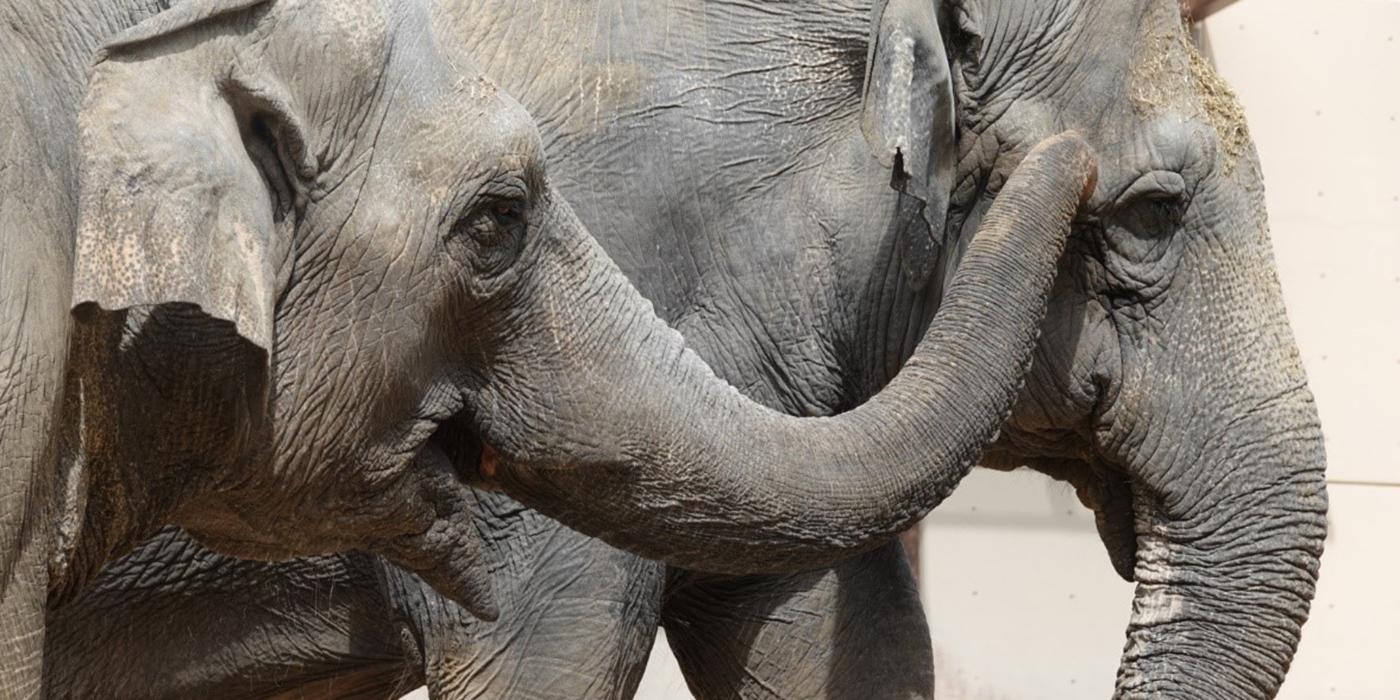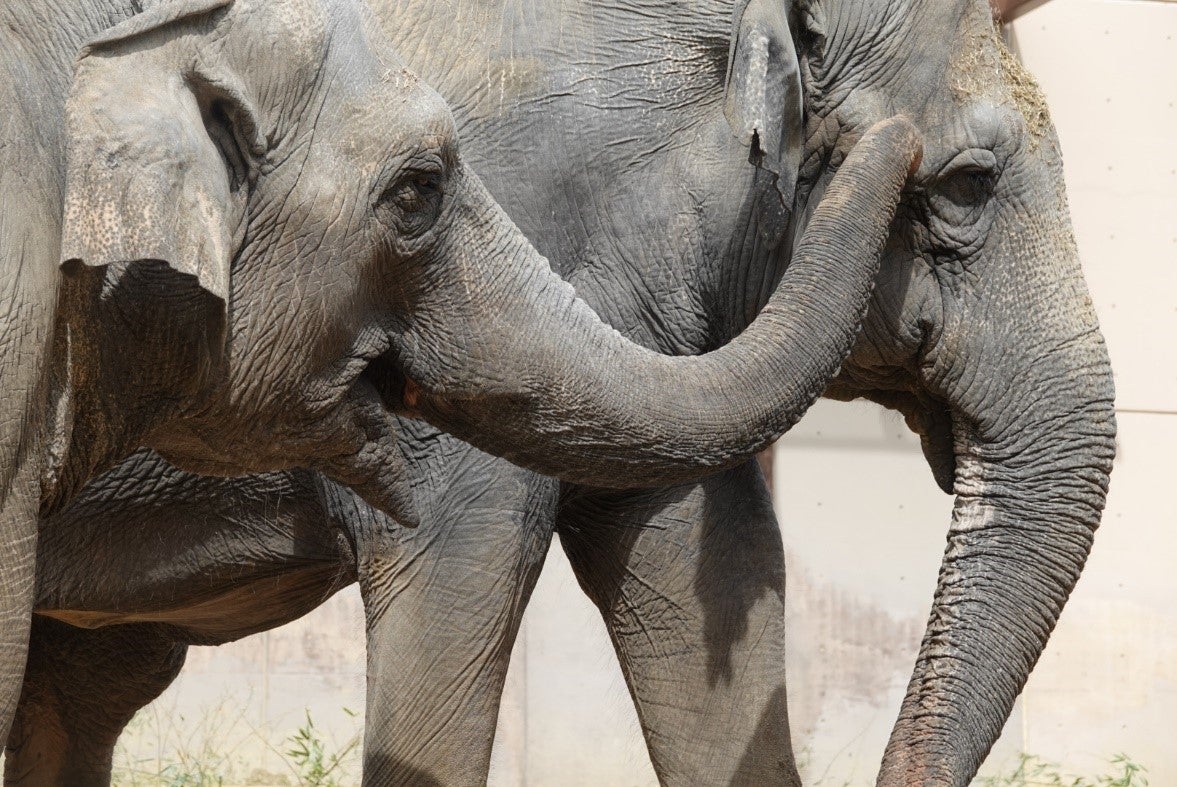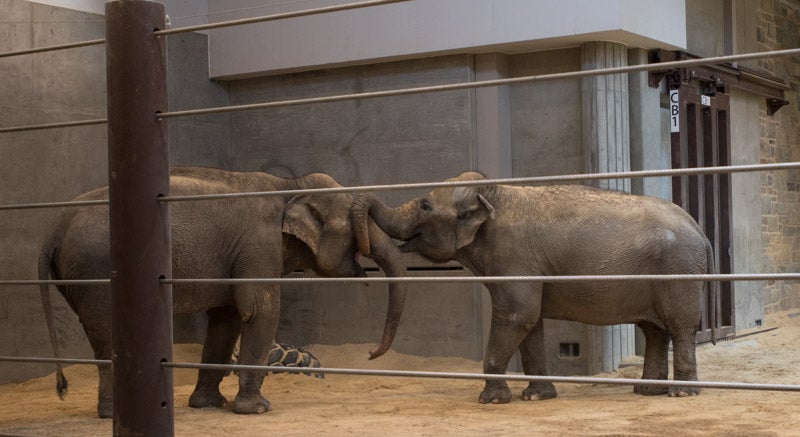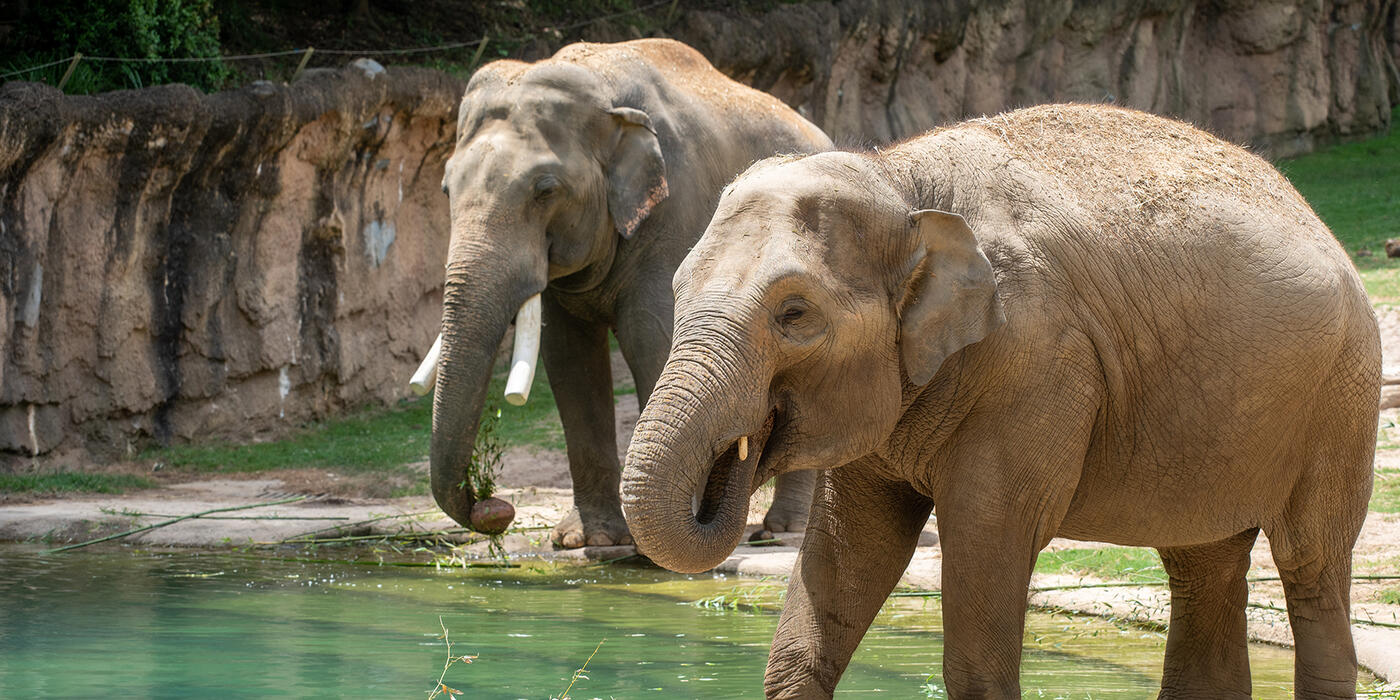How Do You Encourage Elephants to Build Positive Relationships?

How do you get an elephant to exercise, safely introduce two songbirds or prepare a cheetah for a veterinary exam? In this series, get an insider’s look at how animal keepers use activities, food, training and toys to care for the Smithsonian’s National Zoo’s animals. Find out how enrichment stimulates the senses, why training builds trust, and how keepers come up with new ways for animals to explore and use their natural behaviors each day.
In the wild, female Asian elephants travel together in family groups and develop tight-knit, strong relationships. Elephants are highly intelligent and emotional animals, so ensuring that they also build close relationships under human care is extremely important for their welfare. At the Smithsonian’s National Zoo, we care for five female elephants from a few different family groups: Bozie, Shanthi, Kamala, Maharani (or Rani) and Swarna. Luckily, there are a few things we can do to encourage them to build positive relationships.

Discovering which female elephants have a “large and in charge” personality is important in understanding how we can help them get along. When female elephants are introduced to each other, there is generally a more dominant elephant in the group. We can find out which elephants are more dominant and which are more submissive by watching their behaviors when they are placed in a “howdy” situation. A howdy is where elephants can see and touch each other but are separated by a barrier. It’s the first time the elephants meet, and it allows us to see how they interact before we move forward with a full introduction.
A submissive behavior we might see during a howdy is when one elephant presents her rear end to another elephant, with her head down low, eyes averted and ears relaxed. A more dominant elephant might hold her head up high, with her ears sticking straight out to make her look bigger and more intimidating. She might also drape her trunk over the other elephant’s head and body. We often see Bozie draping her trunk over Rani. The dominant elephant is usually the first to make trunk contact, while the submissive elephant stands still until it’s her turn to investigate.
Observing how elephants interact during a howdy helps us determine the next best step and is critical when we begin training. For example, we can use food (or treats) to encourage behaviors that build strong relationships, but we need to know which elephant is dominant. If we offer food to a submissive elephant first, it could cause the dominant elephant to become aggressive. So, the way that we use food must be well thought out, especially when working with animals that have a hierarchical social structure.

Kamala (right) can be seen displaying dominant behaviors toward her daughter Maharani (left).
One of the tools we can use when introducing female elephants is called cooperative feeding. It involves training one elephant to tolerate the feeding of another elephant. The elephants stand next to each other, and we give the submissive elephant a snack that is enjoyable but not too spectacular – like a small slice of apple. We call this a piece of “low-value reinforcement.” We then immediately feed the dominant elephant something slightly more rewarding, like a whole apple or banana. Over time, the dominant elephant begins to learn that when her fellow elephant gets a piece of food, she gets something really good!
After repeated training sessions, the dominant elephant usually starts to enjoy the company of the other elephant, because her presence is paired with tasty food. This is just what we saw after a few cooperative feeding sessions with Rani and Bozie. If the dominant elephant exhibits calm behavior when they are together, she can be praised and fed treats to reinforce this positive behavior.
Once newly introduced elephants are spending more time with each other, we become less involved in the process. At this point, another great tool to help them build their relationship is to introduce new experiences and enrichment items, such as large tires they can push, buoys they can move or new scents to explore. Because elephants are so social, sharing these new and often exciting experiences can strengthen their bond, as they both explore new territory together.
In the future, we would love to investigate how cooperative puzzles feeders could help foster new relationships. Puzzle feeders require an animal to solve a problem to get to food. For example, an elephant may have to stack blocks to climb up for food that is otherwise out of reach, or turn a lever to open a door. Cooperative puzzles require the efforts of two elephants working together to solve a problem, like food on a platform that can only be reached by pulling two ropes at the same time. Elephants are very strong and can be destructive, so building a puzzle like this would not be easy. But it’s something we are interested in exploring in the future.
As keepers, we can’t force elephants to become best friends. Relationships might not always blossom in the way that we hope, but we have the tools to encourage elephants to build positive, healthy relationships. With these methods, we can help elephants learn to tolerate each other’s company, and in best-case scenarios, end up lifelong friends like Shanthi and Bozie.
Want to help replenish toys, puzzle feeders and training tools that are a bit run-down yet well loved by the Zoo’s animals? Donate to the Enrichment Trunk. Your support directly benefits the animals at the Smithsonian’s National Zoo and Conservation Biology Institute.
Related Species:


